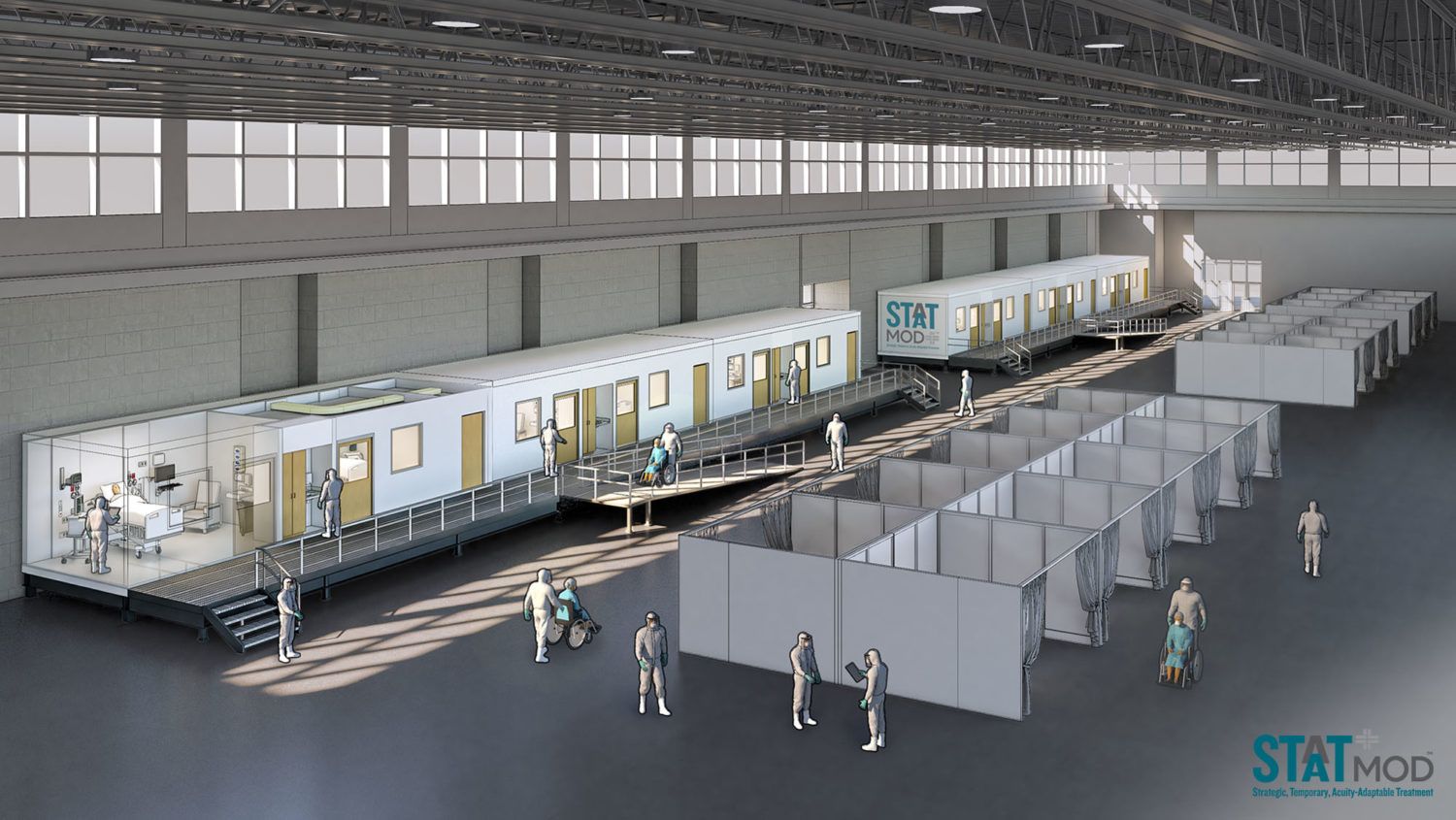Healthcare / Critical care
Versatile modules can help address beds shortage with staff safety in mind
By Andrew Sansom | 17 Apr 2020 | 0
A critical care solution with the safety of healthcare workers at the forefront of its design has been introduced to alleviate the shortage of hospital beds in the United States due to the coronavirus pandemic.
Called the STAAT Mod (Strategic, Temporary, Acuity-Adaptable Treatment), the prefabricated modular solution has been created by multidisciplinary design firm HGA and is being constructed by the Boldt Company for immediate distribution across the country.
It can be deployed in diverse environments from convention centres to free-standing hospital expansions, says HGA, which, in addition to the Boldt Company, has partnered with Tweet/Garot, Faith Technologies and IMEG to provide the STAAT Mod solution. It can be configured for the following applications:
- a two-room isolation unit, which can be rapidly deployed from the point of order, and which is designed for use in an interior shelter, such as in a convention centre;
- an eight-bed unit of critical care isolation rooms consisting of four two-bed modules designed to connect to a hospital or existing structure; and
- a 12-bed unit of negative-pressure open bays comprising a quartet of three-bed, open-bay modules connected to the central support spine – with the option to add as many self-sustaining tiers as desired.
Multiple independent modules can connect to each other or to a hospital with segregated spaces for patient care and healthcare workers, says HGA. The units allow extra capacity to be added or re-deployed to sites where the need is greater.
The design is reported to have been developed and tested through virtual reality (VR) simulation exercises by experts, including critical care nurses trained in COVID-19 protocols, a hospital environment specialist in infection control, and Lean process engineers for rapid construction and delivery. 
Design and functional features include: provision of hospital-level clinical care for infection control; patient isolation; access to life-saving technology and isolation rooms, if needed, for extended periods of time; safety provisions for healthcare workers through standardised design, centrally located supplies, and segregated staff workspaces; pre-fabrication for speed, quality and safety of contractors; and significantly lower costs compared with conventional construction.
According to HGA, the Centers for Disease Control and Prevention (CDC) recommends use of airborne infection isolation rooms (AIIRs) for patients with infectious disease as coronavirus is spread via respiratory droplets or from droplet contact on surfaces. To create environments that extend hospital-level care, the STAAT Mod is said to meet CDC guidelines to provide immediate critical care for coronavirus patients.
The architects stress that the design of the modular solution is based on clinical protocol in dealing with infectious diseases.
“The STAAT Mod answers the escalating demand for more treatment space,” said Kurt Spiering, national healthcare practice leader at HGA. “This engineered, modular design of hospital-level care environments puts the safety of the patient and healthcare worker first while still accomplishing speed and capacity of other solutions.”
Dave Kievet, chief operating officer of the Boldt Company, added: “Building in a controlled environment allows us to set and achieve aggressive production schedules, which improve quality for the end user and maintain safety for our team members. By standardising the process we can increase speed to market and help save lives.”
Organisations involved
